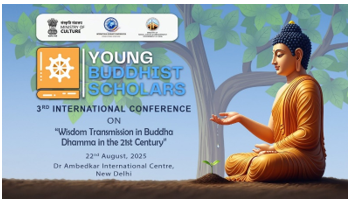Asia-Pacific Institute for Broadcasting Development
Context: Recently, India has been elected as the Chairman of the Executive Board of the Asia-Pacific Institute for Broadcasting Development (AIBD) during the 23rd AIBD General Conference.
More on the News
- India last held the position of AIBD Executive Council Chairman in 2016.
- This development further strengthens India’s leadership in AIBD, as it continues its presidency until August 2025.
- This prestigious appointment reaffirms global trust in India’s broadcasting leadership and paves the way for a greater role in global media development.
Asia-Pacific Institute for Broadcasting Development (AIBD)
- The AIBD was founded in 1977 under the auspices of UNESCO and the Secretariat is located in Kuala Lumpur.
- It is a unique regional inter-governmental organisation servicing countries of the United Nations Economic and Social Commission for Asia and the Pacific (UN-ESCAP) in the field of electronic media development.
- It currently has more than 92 member organizations from 45 countries, including:
26 Government Members represented by 48 national broadcasters
44 Affiliate Members from 28 countries and regions, spanning Asia-Pacific, Europe, Africa, Arab States, and North America - India is a founding member of AIBD.
- The Executive Board (EXBO) supports the General Conference and Institute in areas like finance, HR, institutional growth, administration, and programme development.
Source:
23rd AIBD General Conference
- Theme of the conference: “Media for People, Peace & Prosperity”.
- The 23rd General Conference and Associated Meetings of AIBD concluded successfully in Phuket, Thailand.
- The conference united global media stakeholders to promote a collaborative Asia-Pacific media landscape through policy exchange and resource sharing.
3rd International Conference of Young Buddhist Scholars
Context: The International Buddhist Confederation (IBC), in collaboration with the Dr. Ambedkar International Centre (DAIC), successfully hosted the 3rd International Conference of Young Buddhist Scholars (ICYBS).
3rd International Conference of Young Buddhist Scholars (ICYBS)

- The theme for this year’s conference was “Wisdom Transmission in Buddha Dhamma in the 21st Century.”
- ICYBS was hosted under the aegis of the Ministry of Culture, in collaboration with the Dr. Ambedkar International Centre.
- The conference brought together young scholars, professors, monks, and dignitaries from countries including Russia, Vietnam, Cambodia, Sri Lanka, Myanmar, Taiwan, and India.
- The conference aims to strengthen the role of the youth in preserving the essence of the Buddha Dhamma.
- Across four thematic panels, participants discussed Emperor Ashoka’s governance model, traditional knowledge transmission through the Guru-Shishya relationship, the role of Buddha Dhamma in shaping ethical AI, and the engagement of youth through education and Sangha-led initiatives.
International Buddhist Confederation (IBC)
- IBC was formally established in 2012 following a Global Buddhist Congregation in New Delhi.
- This body aims to give Buddhism a global voice to preserve heritage, share knowledge, promote values, and ensure meaningful participation in global discourse.
- It unites all Buddhist organizations to actively address and engage with global issues of shared concern.
- Motto: Collective Wisdom: United Voice.
Sources:
News On Air
Agni-5 missile
Context: Recently, India successfully test-fired Agni-5 from the Integrated Test Range at Chandipur, Odisha.
More on the News
- The launch validated all operational and technical parameters and was carried out under the aegis of the Strategic Forces Command.
- The previous trial of the Agni-5 took place on 11 March 2024, when it was successfully tested with Multiple Independently Targetable Re-entry Vehicle (MIRV) technology.
- DRDO is developing Agni-VI with an expected range of ~10,000 km, while the deployed Agni series already covers ranges from 700 km to 3,500 km.
Agni-5 Missile
- It is an indigenously developed intercontinental ballistic missile (ICBM), designed by the Defence Research and Development Organisation (DRDO).
- It is a nuclear capable Surface-to-Surface Ballistic Missile.
- It is India’s longest-range operational missile with a range of 5,000km.
- Its coverage includes the complete Asian continent and extends to parts of Europe.
- The Agni-V launches from a sealed canister on a road-mobile launcher, compressing the time needed to prepare for launch.
- The missile’s advanced guidance systems reportedly provide high precision, and it is powered by a three-stage solid-fuel rocket.

